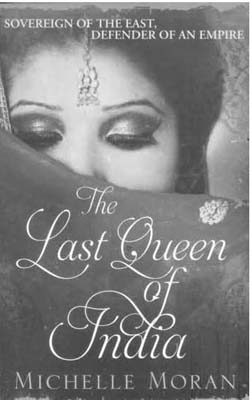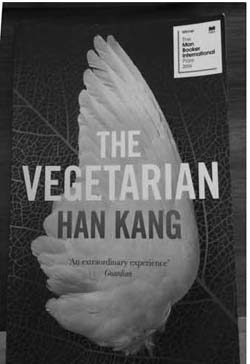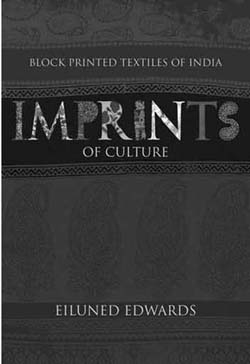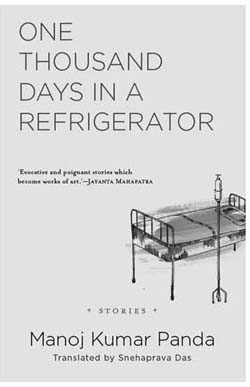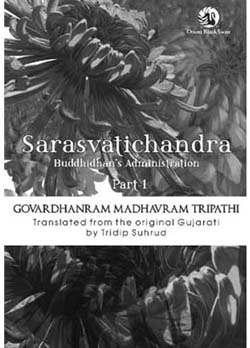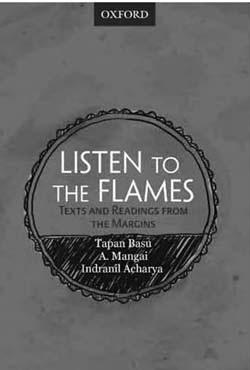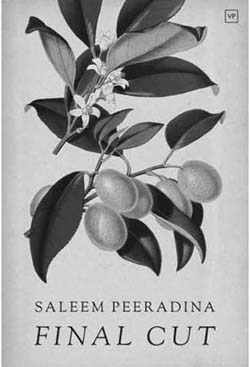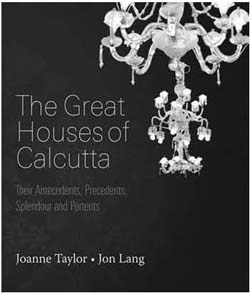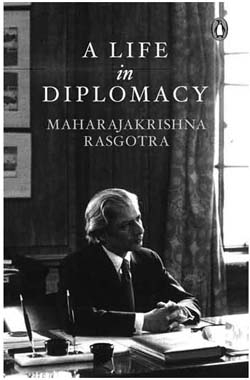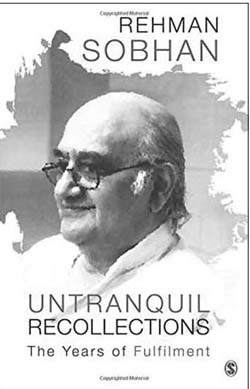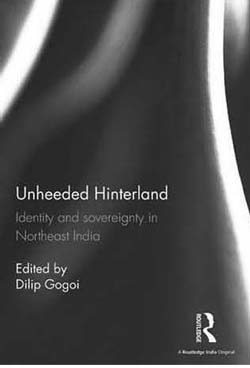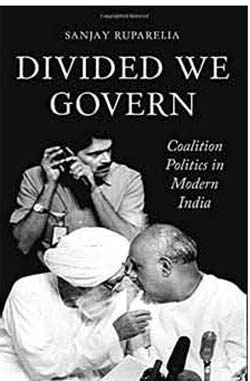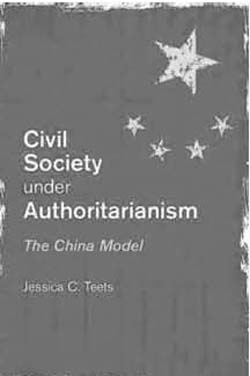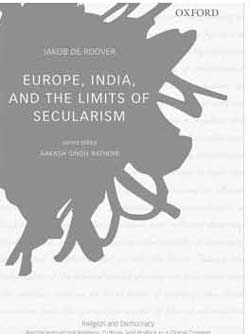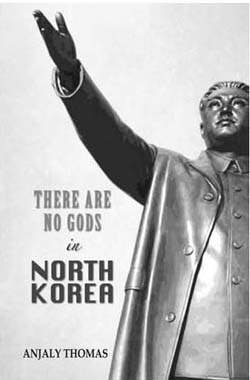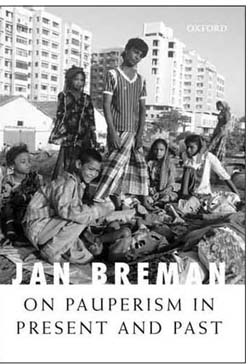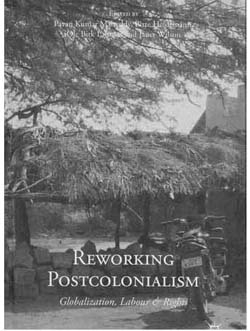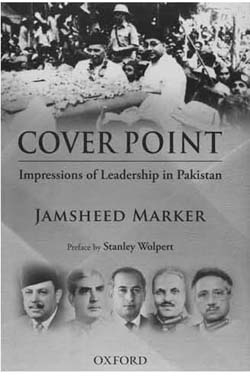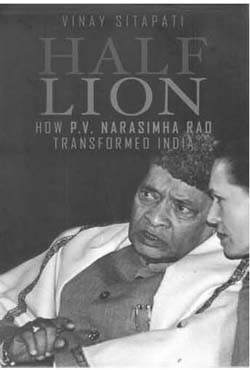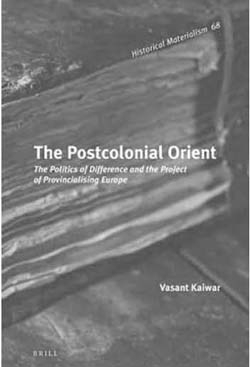The Last Queen of India is an excellent piece of historical fiction by Michelle Moran. The novel revolves around the life of Rani LakshmiBai, the Rani of Jhansi, and chronicles the period of the Great Revolt of 1857. While many of the characters around whom the story revolves in the novel exist and are documented to various degrees of accuracy in historical records, the protagonist seems to be an entirely fictional construct of the author. Sita, the medium through which the story is told, starts out as a young girl, who manages to enlist with the Queen’s all-female bodyguard called the Durga Dal. The novel is presented as the memoirs and recollections of Sita writing many years after the events, and thus frames the first person narrative that Moran favours reasonably well.
Archives
September 2016 . VOLUME 40, NUMBER 92015
Now at least I can look at you in peace. I don’t eat you anymore. (Kafka to Max Brod, his estate keeper, upon seeing a fish in an aquarium at the Berlin zoo.)The aphorism ‘the personal is political’ may be what Han Kang’s The Vegetarian is all about. This is a story of personal revolt caused by a psychosomatic condition that may be symbolic of a political and social revolt—women making choices for themselves and their households independent of the men they marry and a rejection of family traditions and customs, mirroring dissent to the rigid politics in Korea. Han Kang has expressed her alarm at the authoritarian streak of the President, Park Geun-hye, the daughter of an assassinated military dictator.
Block printing was the most widespread means of printing textiles, which was eventually displaced by the advent in India of roller printing in the 19th century and commercial screen printing in the 20th century. Indian block prints are hailed for their permanency of colours. The book is an account of the history of block printing, how it was a significant source of revenue and how it has evolved in an innovative way. There are relevant pictorial references to fabric, blocks, artisans making it an interesting read. The decline in popularity of block printed fabric and resurrection of the art has been documented quite extensively.
The Man Booker International Prize (MBIP) was awarded this year to Han Kang, a South Korean writer, for her novel The Vegetarians.* The MBIP 2016 attracted global attention not only due to the merit of the novel but also for the fact that it ‘celebrated’, as a MBIP web-post states, ‘the finest global fiction in translation’. Deborah Smith, the English translator of the novel, was thus accorded equal recognition by the MBIP committee: the prize money was evenly shared by them as was the glory. Indeed, as a Literature Across Frontiers report suggests, due to remarkable increase, in the visibility of translated books, and the translators themselves, translated literature (TL) is no longer a niche interest which ‘appeals only to a discerning but limited readership’ (The Guardian, 16 May, 2016). Recent surveys carried out by agencies such as Nielsen show that the global TL market is expanding like never before. India being no exception has also seen a rise in demand for TL or more specifically, Indian Literature in English Translation (ILET).
Hailed as a landmark literary work, a milestone in the literary history of Gujarat, Sarasvatichandra, Govardhanram Tripathi’s magnum opus is now available in English translation after an astounding 128 years of its publication in Gujarati. Now when it has been published in Hindi and English, the two link languages of India, what implications could it have for present-day Indians? It is but natural for two questions to arise in the mind of the discerning reader. Firstly, why was it not translated for these many years? Secondly, (coincidently, all the four parts of the novel have been published in Hindi translation at this very juncture), why has it been published in English translation after these many years? Answers to these questions are not easy to locate but must be addressed and contextualized by scholars and researchers working in this area.
The strife, the struggle and the anguish buried in the recesses of a Dalit’s psyche had to be understood in his own medium/language. The true victory is when they started writing their own history. Historically speaking, Dalit is a condition. The world experienced by the Dalit is altogether unrecognizable from the perspective of the present. It is time students as well as teachers—whether Dalit or non-Dalit— came face to face with the Dalit consciousness and the challenges they face as writers. For the first time ever an attempt to document Dalit ideology in the form of a textbook has resulted in the outstanding Listen to the Flames: Texts and Readings from the Margins.
2016
Poets are always best at their craft when they leap to the magical imagination to elevate readers to new perceptions and milieu related to meaning and experience. Like the publisher-poet of this book, Jamie McGarry, I found the poem ‘The Lesson’, more akin to an opening overture of this collection, candidly meeting this benchmark. Through this poem, Saleem Peeradina’s savoir-faire as a poet successfully takes us on that enchanted journey to deliver us to the experience of things beyond a materialistic tuning.Take a sheet of paper the size of a drawing pad. The universe,as we perceive it, must be accommodated within the borders of this rectangle.
There are different ways of getting familiar with a city, and perhaps the descriptions of its monuments are among the most popular ways of doing so. Tourist guides and brochures of every major city in the world are replete with pictures and descriptions of its most visited and iconic monuments and buildings, more often than not, a newcomer to a city gets acquainted with it through its monuments, and therefore, a proper understanding of a city’s monuments and buildings is the crucial first step of getting acquainted with a city. The Great Houses of Calcutta by Joanne Taylor and Jon Lang attempts to familiarize a wide audience with the city of Calcutta, its socio-political and economic history and the lives of its people in an era gone by through a detailed analysis of some of the mansions of the local Bengali elites of colonial Calcutta.
Maharajakrishna Rasgotra was a career diplomat who served India with great distinction for almost forty years (1949–1990), often working closely with Pandit Nehru, and later, Indira Gandhi. He was born in a humble (though aspirational) family and was, therefore, largely a self-made man. Any book written by him would be of interest. A Life in Diplomacy is specially so because it is the story of India and the world which the author saw— and tried to shape—in his long years in the world of diplomacy. (The book contains a few finely drawn vignettes from the author’s personal life—his early years, his poetry, his marriage, the tragic loss of a child, his spiritual awakening later in life . . . but, as is made clear by the author, the book is not an autobiography.)
Pakistan lies dead and buried under a mountain of corpses. Tajuddin Ahmed in the Proclamation of Independence after his swearing-in as PM of the Interim Government of Bangladesh at Kushtia, 17 April 1971.The idea of a pre-planned Indian conspiracy to break-up Pakistan appeared to us, from our direct exposure to the responses of those in authority in India, to be a figment of the Pakistani imagination. Sobhan, p. 362.
‘The postcolonial North East India represents a land of claimed multiple sovereignties. With fractured histories, multiplicity of ethnicities and peculiar geographical location, the region has been grappling with multiple political crises—from ethno-nationalism to the demand for territorial sovereign homeland.’ The editor’s introduction is an apt description of the contemporary political situation in North East India. With so many sovereignty movements around it is obvious that the region throw up new discourses and debates on the prime concern: sovereignty. Throughout the nineteenth century, Indian political thinkers discussed and debated the form of polity, nature of sovereignty, modes of people’s participation in the polity. On the eve of Indian Independence these debates took a serious turn with multiple sovereignty demands from separatist groups like the Pakistan movements, Azad Punjab movement, Akhand Hindusthan movement, Isolationist Princely States as well as smaller communities who wanted a sovereign existence outside Independent India.
This classic nursery rhyme in many ways sums up the story of the ‘thirdfront’, the protagonist of Sanjay Ruparelia’s engaging narrative, Divided We Govern: Coalition Politics in Modern India. The pioneers in the art of coalition politics at the federal level, the components of the third-front have today gone in different directions and often come together only to separate immediately after that. In this study, Ruparelia explores in elaborate detail the coming together, performance in government and also the unravelling of three third-front federal coalitions, namely the Janata experiment (1977–78), National Front (1989– 1990) and the United Front (1996–98). In each of these coalition formations, the ‘broader Indian Left’ as he prefers to call them played a dominant role in reducing the two polity-wide parties, the Congress and the Bharatiya Janata Party (BJP) to side actors.
Editorial
Civil society and governance form key issues of concern among academia, leadership and international organizations considering the importance of cementing democracy and strengthening individual rights. The issue is significant in the case of China as scholars have written about the mutual interplay between both in order to explore the nature of political freedom and exercise of party control in China. Noted works like Civil Society and Governance in China (2012) by Jianxing Yu and Sujian Go have analysed this question based on a theoretical understanding and empirical case study of China. While in Karla W. Simon’s work Civil Society in China: The Legal Framework from Ancient Times to the ‘New Reform Era’ (2013) the question that China lacks a history of civic participation is challenged with a detailed analysis of the re-emergence of a vibrant civil society in China under government constraints.
There is a kind of negativity which is inherent to ‘toleration’, and so has it been all through with ‘liberal toleration’. Unfortunately, there have been far too few studies on the conceptual moorings of ‘toleration’ which only makes one wonder when commentators and scholars will start respecting the differences rather than merely tolerating them.Although Roover recognizes the negativity of liberal toleration, he doesn’t tell us anything about the negativity that ‘toleration’ as a concept is impregnated with, but he does introduce us to the negativity that ‘liberal toleration’ as a model of containing conflict and managing diversity is imbued with. Roover suggests that the contemporary liberal model of toleration is not only deficient in obviating the resurgence of religion in the public sphere, but it inherently carries in itself certain forms of intolerance towards the entities which fail to conform to the public/private distinction. Researching the contemporary with what I may call conceptual etymology, Roover tries to explain how and why secularism in the contemporary form remains incapable of obviating the current conflict and managing the presence of religion in the public sphere and how it carries certain forms of intolerance. This question remains the focus of this book.
North Korea never fails to amaze. It is the only country that has managed to fool all its people for all the time and has silenced them so completely even in this age of internet explosion. Anjaly Thomas confirms this in her book There are No Gods in North Korea. She visited that country for five days, under considerable personal risk. She has made an honest attempt to present the facts about North Korea without embellishment.
Why is the United States the most powerful country in the world today? I always pose this question to students in my inaugural lecture on contemporary Southeast Asia. Students provide several answers. The United States is the most powerful country in the world; it has vast economic resources; technologically it is the most advanced country, etc. While the above answers contain elements of truth, I clinch the issue by stating that the United States is the first country in the world to realize that knowledge is power. American Universities—Harvard, Yale, Columbia, MIT to name some—attract the best talents from countries across the world and they set in motion concepts and ideas which we in the rest of the world blindly accept.
The book under review by Jan Breman, one of the most significant contributors to the literature in the Indian subcontinent on the rural economy in the past several decades, is a departure from, yet connected to the area of rural economy. Explaining this the author remarks that despite conducting the large part of his almost five decades of research in Gujarat, it was this study which made him ‘realize more than before that the limited time spells that the labour migrants stay in the city’ (due to their expulsion from agricultural work), ‘are linked not only to the way the labour market operates at the bottom of the informal economy but also and to no lesser extent due to political and administrative barriers in establishing a foothold of sorts.
Postcolonial criticism at one time was regarded as the harbinger of a new ethical framework in cultural studies, especially in the western academy. With the rise of the discourse of globalization in the 1990s postcolonial discourse appeared to lose much of its currency and critical energy, since its central issues such as colonizer/colonized, East/West and centre/margin, the cornerstones of postcolonial criticism, were no longer applicable to the global era with the blurring of national boundaries. Globalization is a transformation of the entire world system, and it affects not only the metropolitan centres of the world but also its most remote margins. On the other hand it effects a levelling out of heterogeneity or difference.
As a subject of study, Pakistan is primarily evocative of volatility, disarray, long held as a country that serves as physical sanctuary for violent extremist forces. Jamsheed Marker’s Cover Point: Impressions of Leadership in Pakistan does not follow a set pattern, it rather breaks away from treading the beaten track. It neither presents Pakistan’s chequered political history in pure conventional theoretical terms nor puts it across within the confines of excess security focus. Instead, Marker innovatively approaches the complex political trajectory of Pakistan in a lucid, reader-friendly account embellished with interesting anecdotes, that are quite suggestive of the author’s diplomatic acumen honed during a wide-ranging public service career.
That Indians lack a strategic culture is an oft quoted and universally expressed truism. An aspect exemplifying this not-so-flattering a reality was the non-availability of military history books especially of India’s participation in wars and military campaigns of the last hundred years or so. However, this trend is changing fast and dozens of books on recent military exploits of the Indian Armed Forces have been hitting the bookshelves especially as regards military conflicts in post-Independence India. A fair number of books on the first Kashmir War(1947–48), India’s China War (1962), India-Pak War of 1965, the 1971 War leading to the liberation of Bangladesh and even the Kargil operations in 1999 have been well published by authors, both military and civilian, in India.
How do you judge a good biography, especially in a country where the tradition of writing them is virtually nonexistent and where even the few that do get written, tend to be hagiographies? It is hard to say but Vinay Sitapati’s biography of P.V. Narasimha Rao, a former Prime Minister of India, fulfils the five criteria that could be applied, namely, length, style, research, new information and novel interpretation.Last year, Daman Singh, Manmohan Singh’s daughter wrote her father’s biography but it failed on three of the above five counts: research, new information and novel interpretation. It was an interesting read but added little to what was not already known.
Postcolonial Studies (PCS) is widely seen as intellectually avant garde and politically radical and progressive. There is a small but growing literature, to which this book is a valuable contribution that critiques PCS on both counts; in these respects seeing its claims to going beyond the supposed limitations of Marxism, as mistaken and dangerous. PCS is more a retreat and a bad detour, not a rich and promising new path of exploration. Or, as the author Kaiwar puts it, ‘Postcolonial studies with its poststructuralist and post-modernist imbrications does not have the same value or valences as Marxism … [which] is also the “anticipatory expression of a future society”.’ The object of critique here is not the vast body of historical and sociological writings done in the name of Subaltern Studies (SS) or PCS which have their merits and insights as specific case studies but of their theoretical pretensions and claims.

